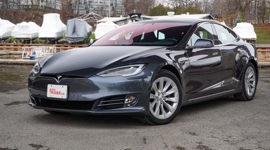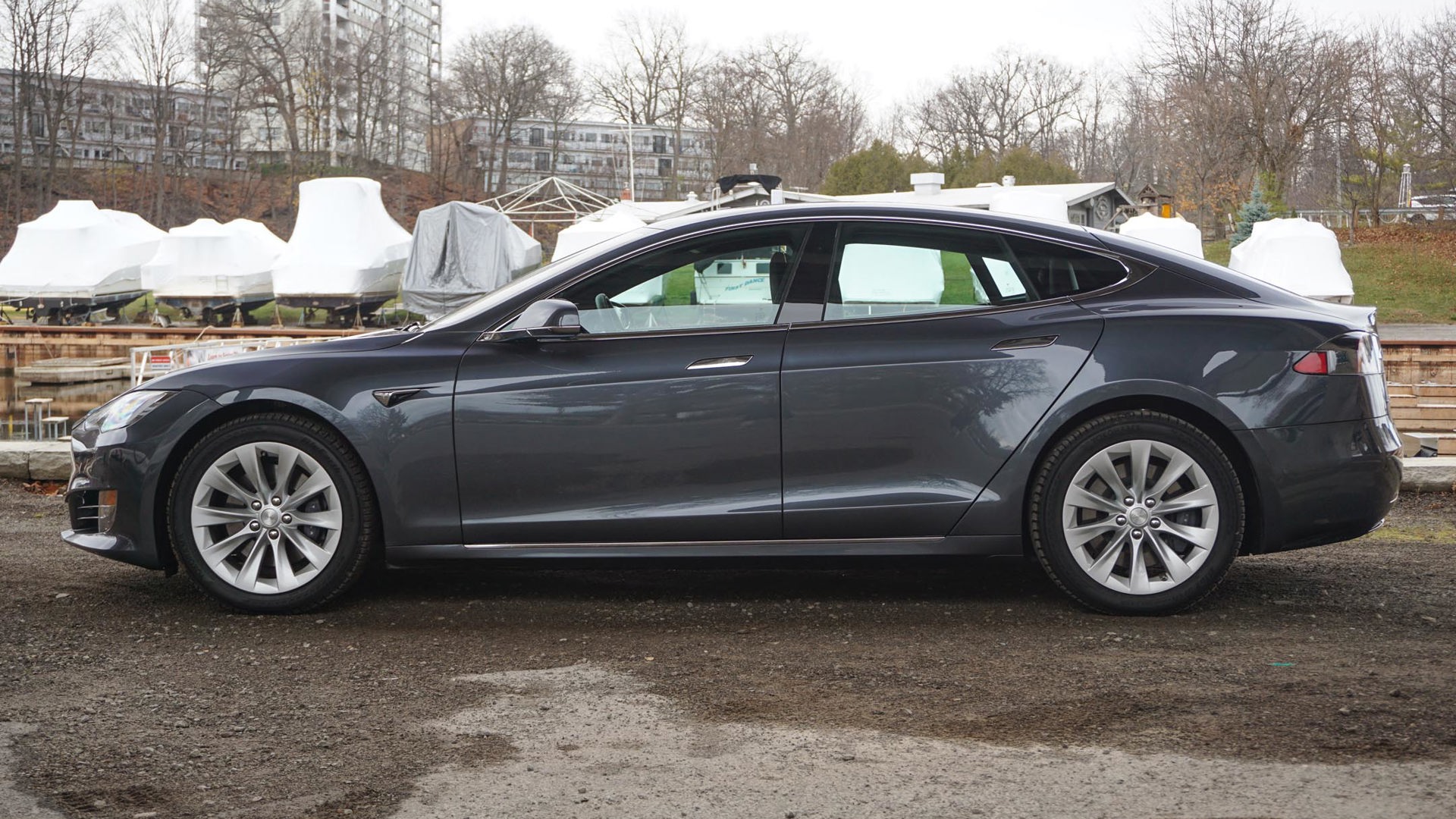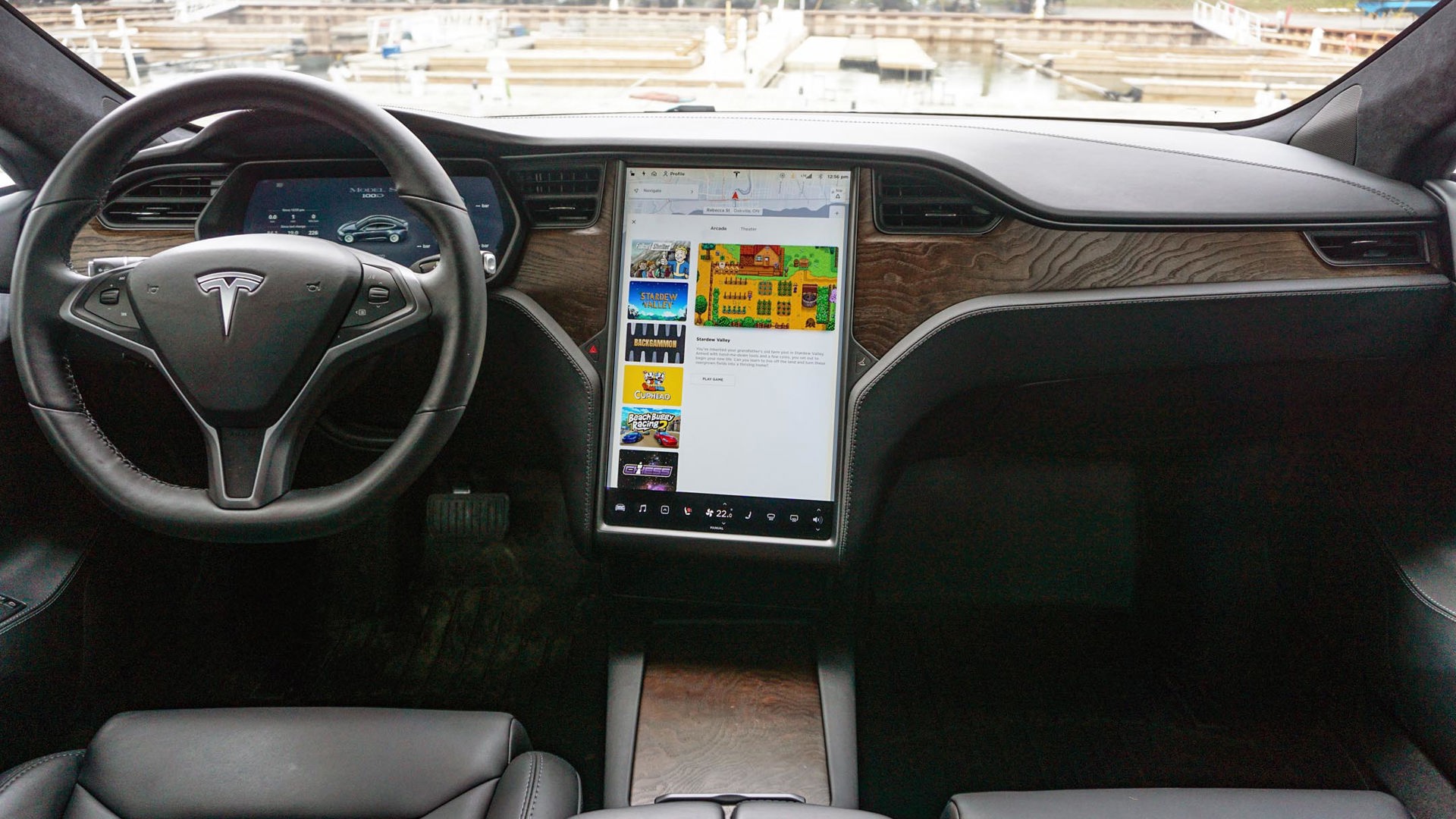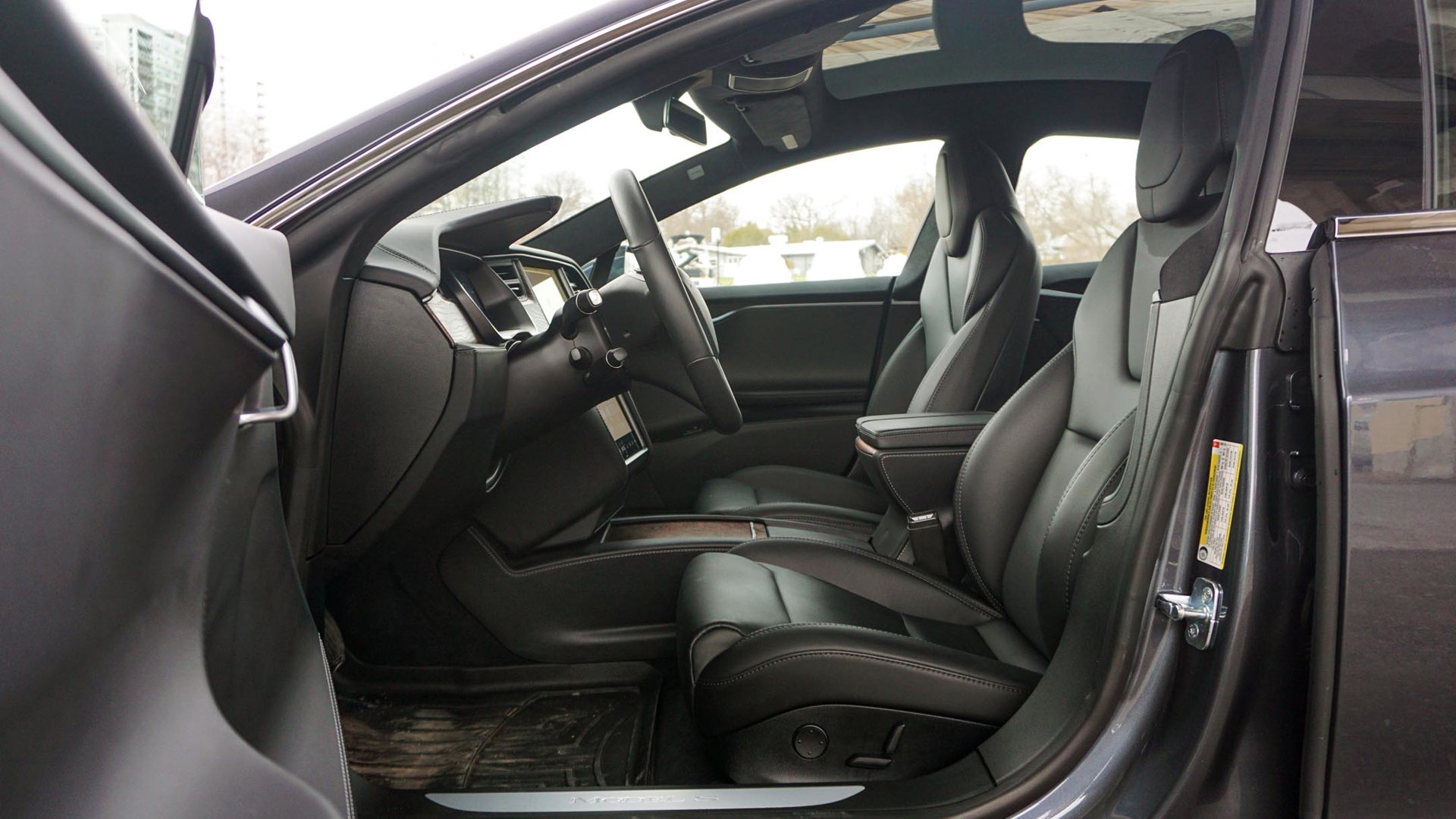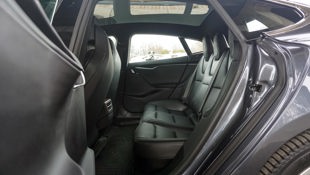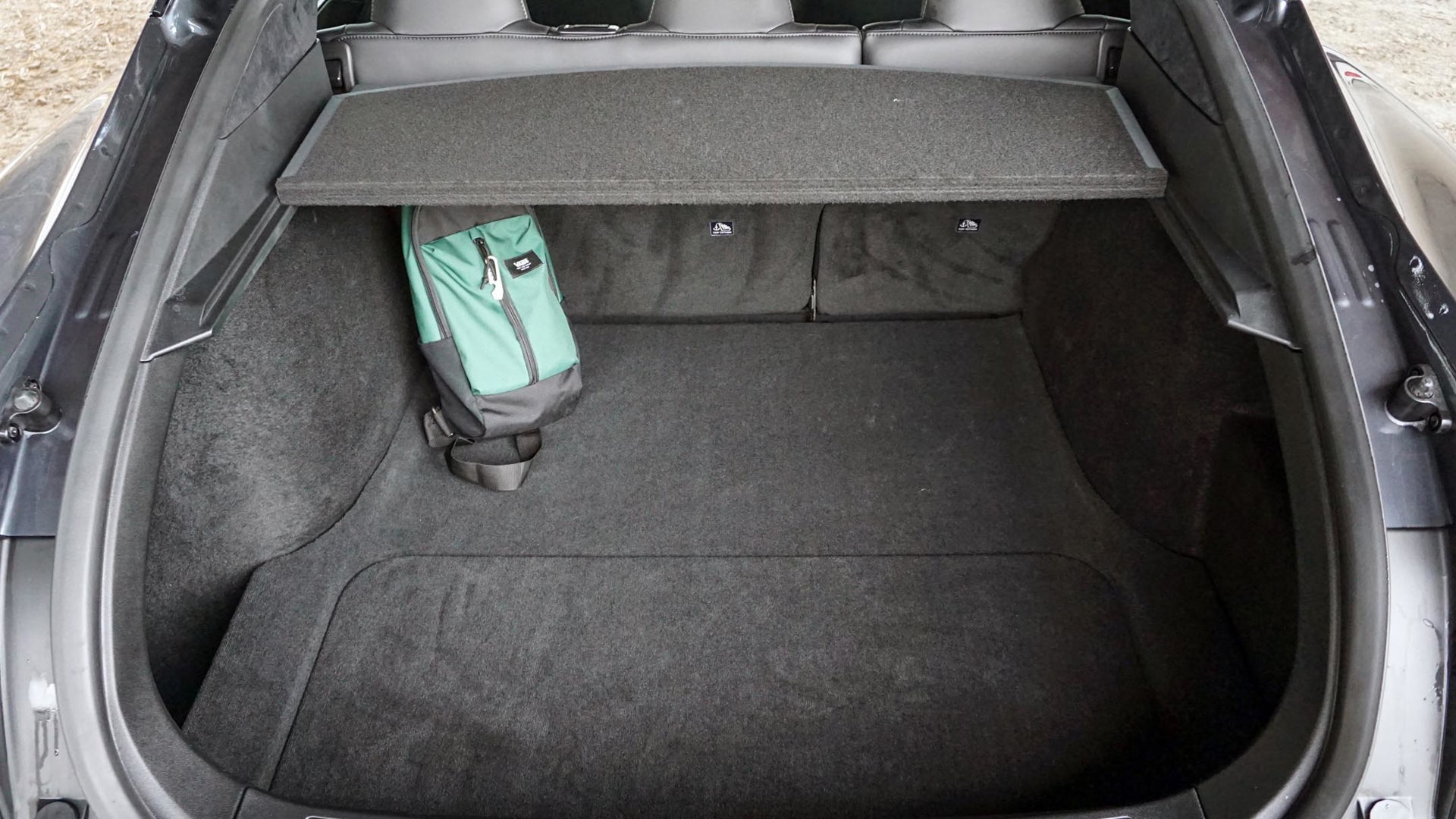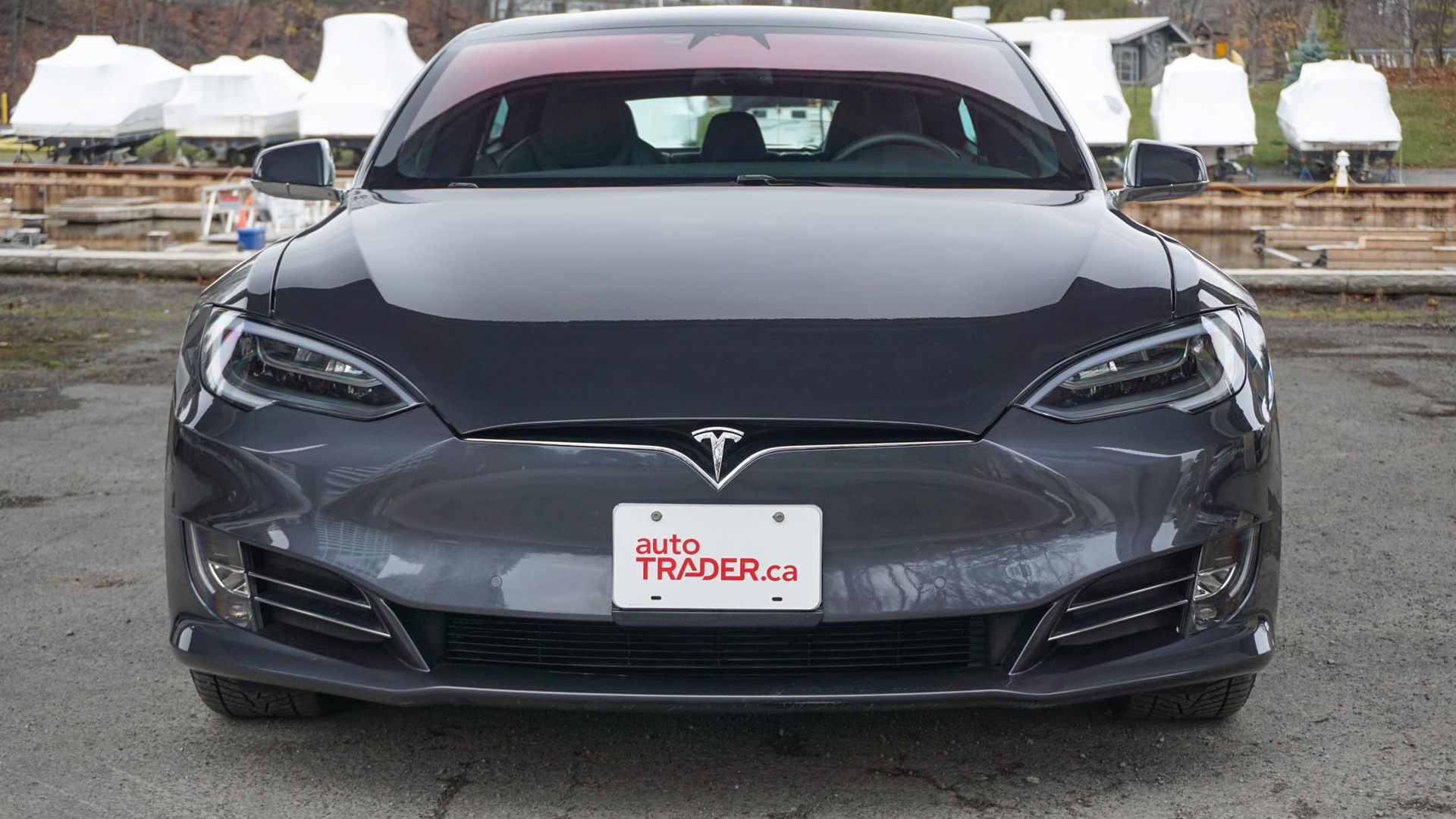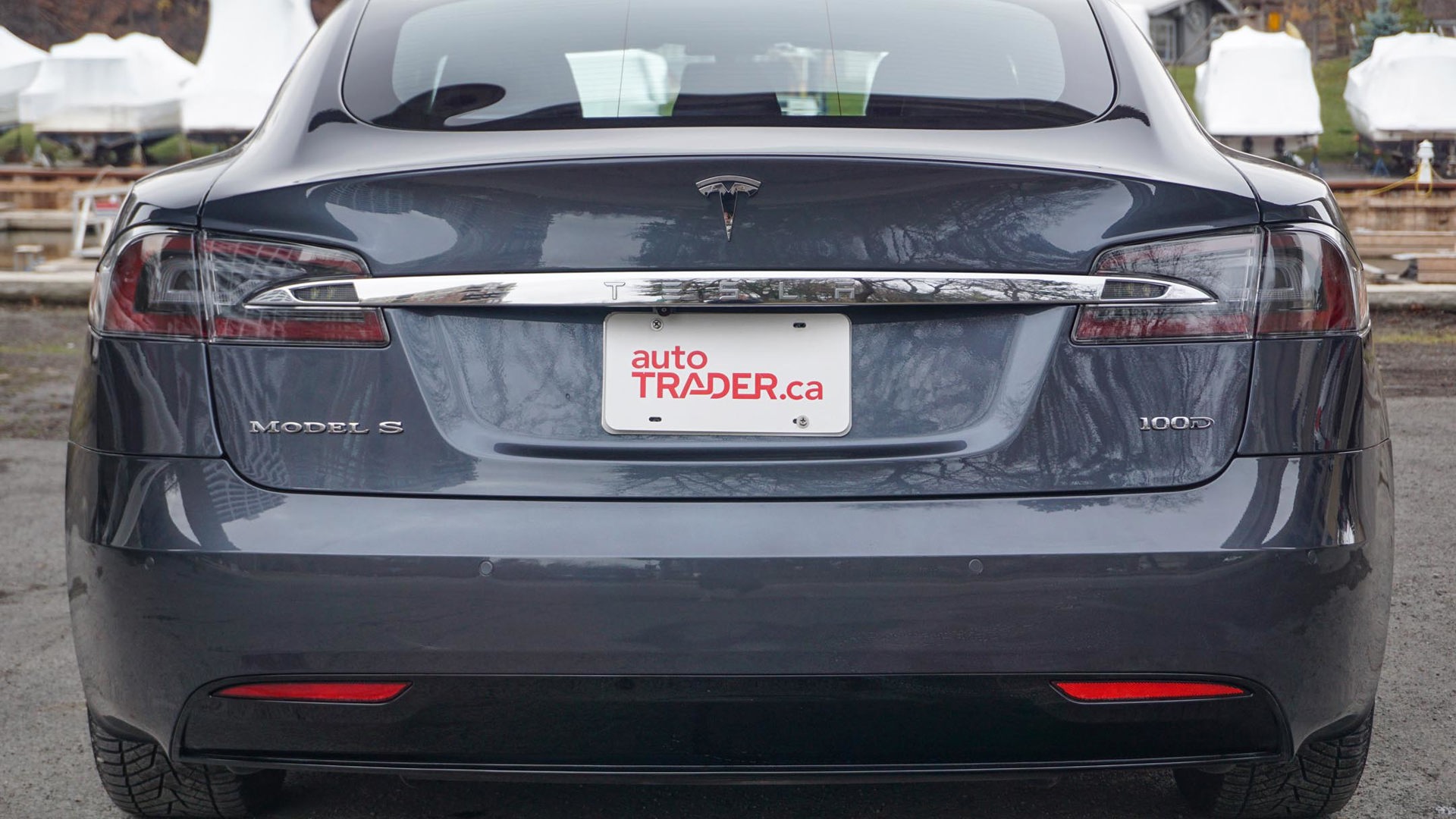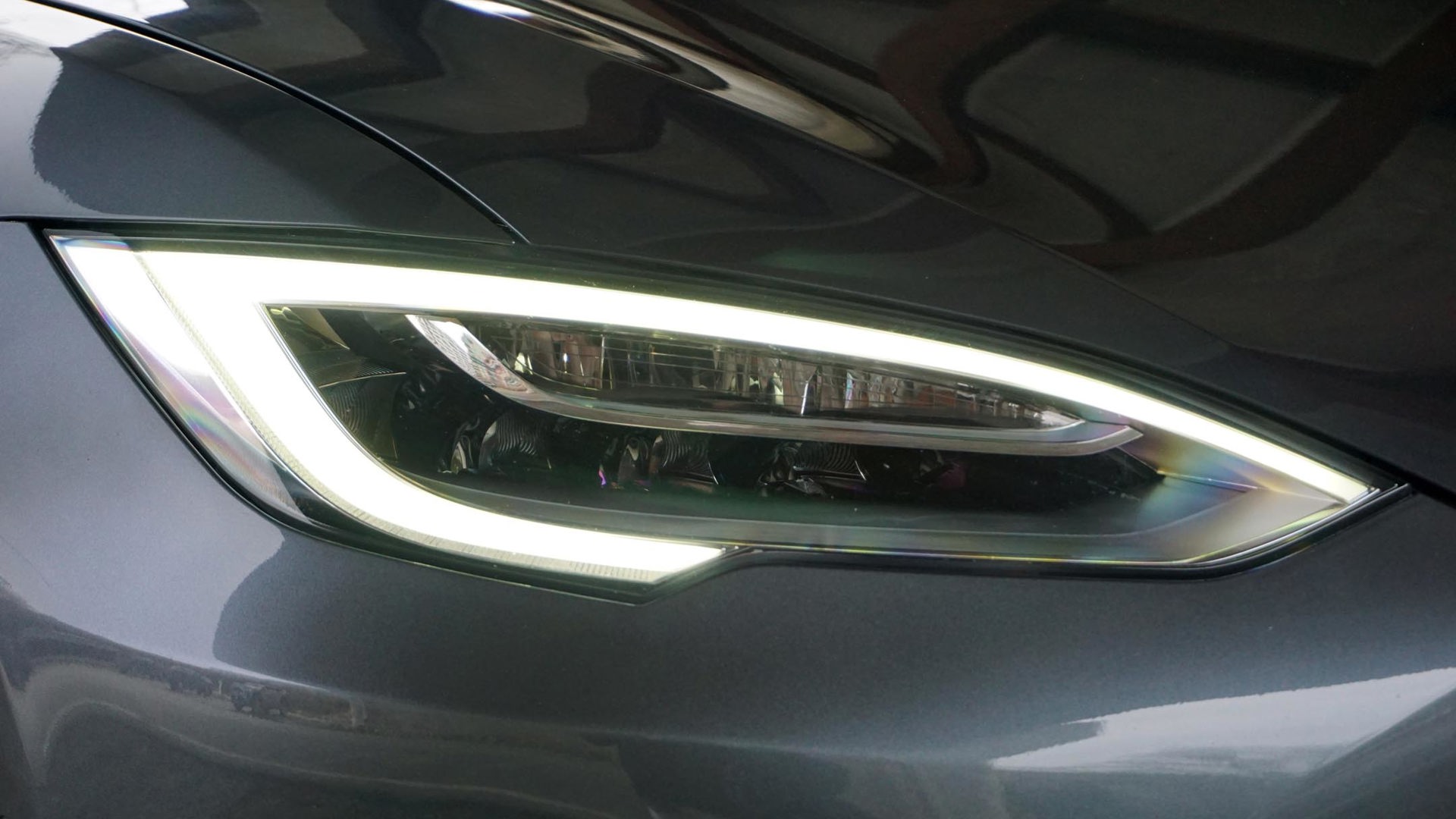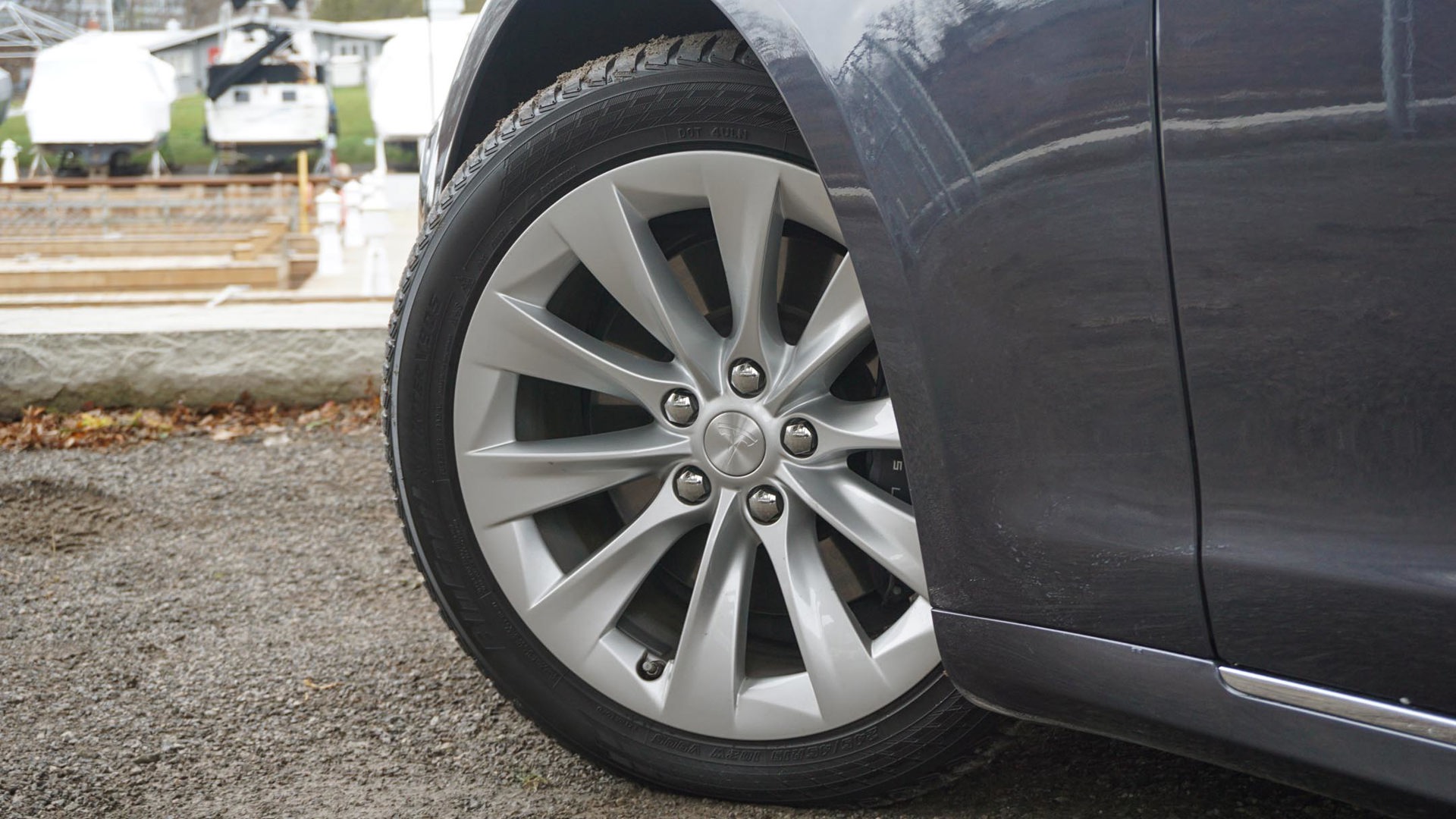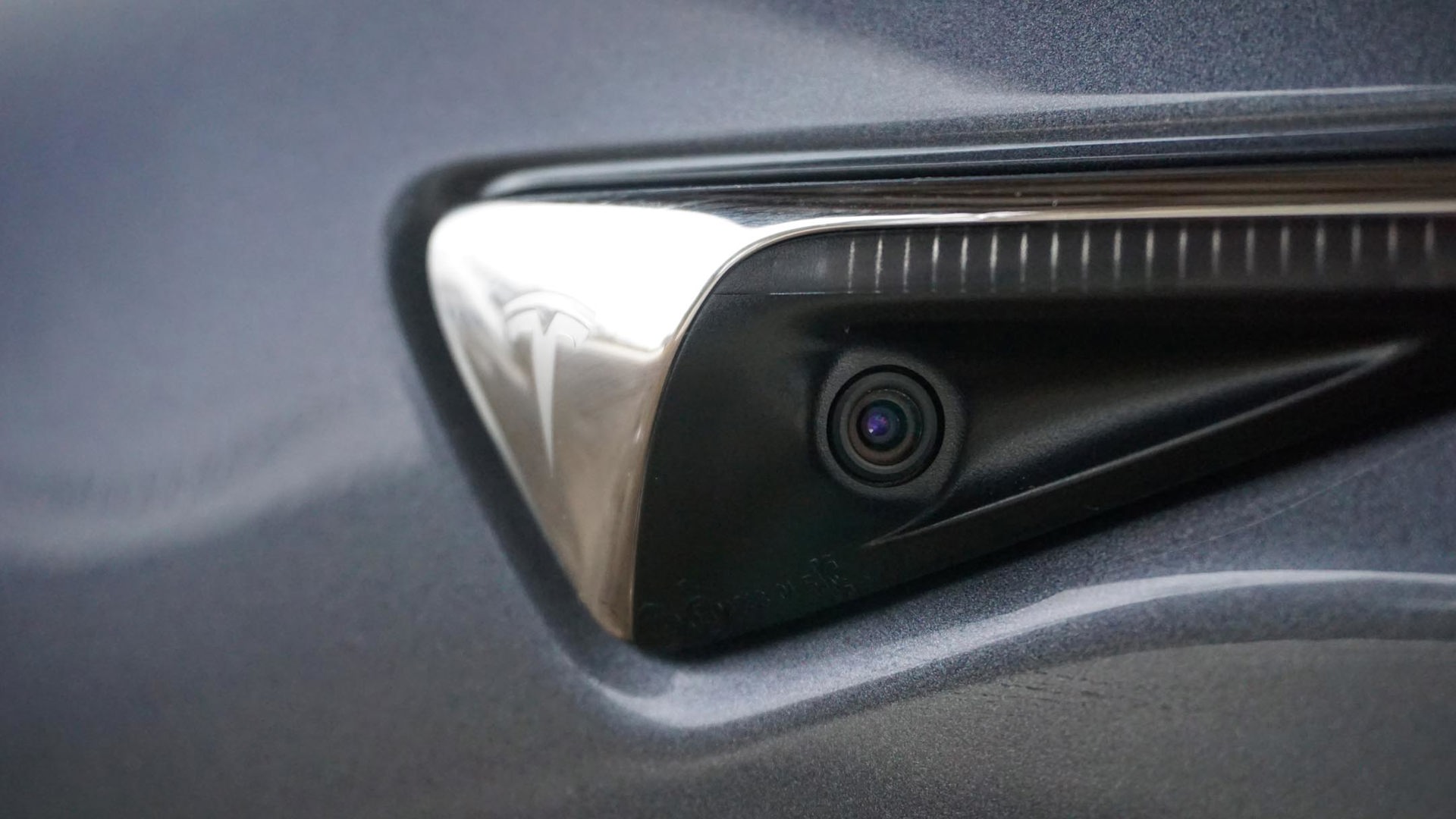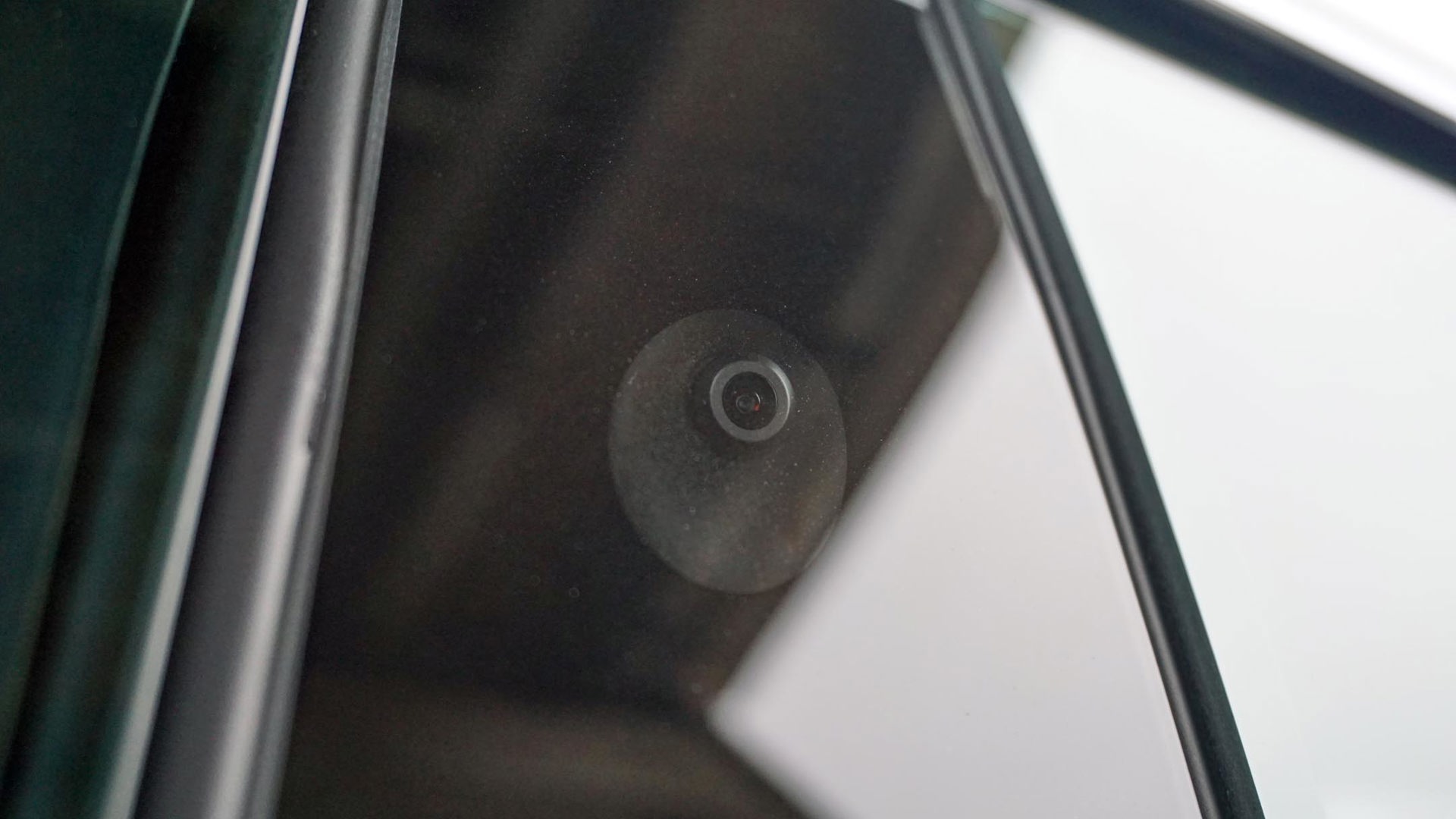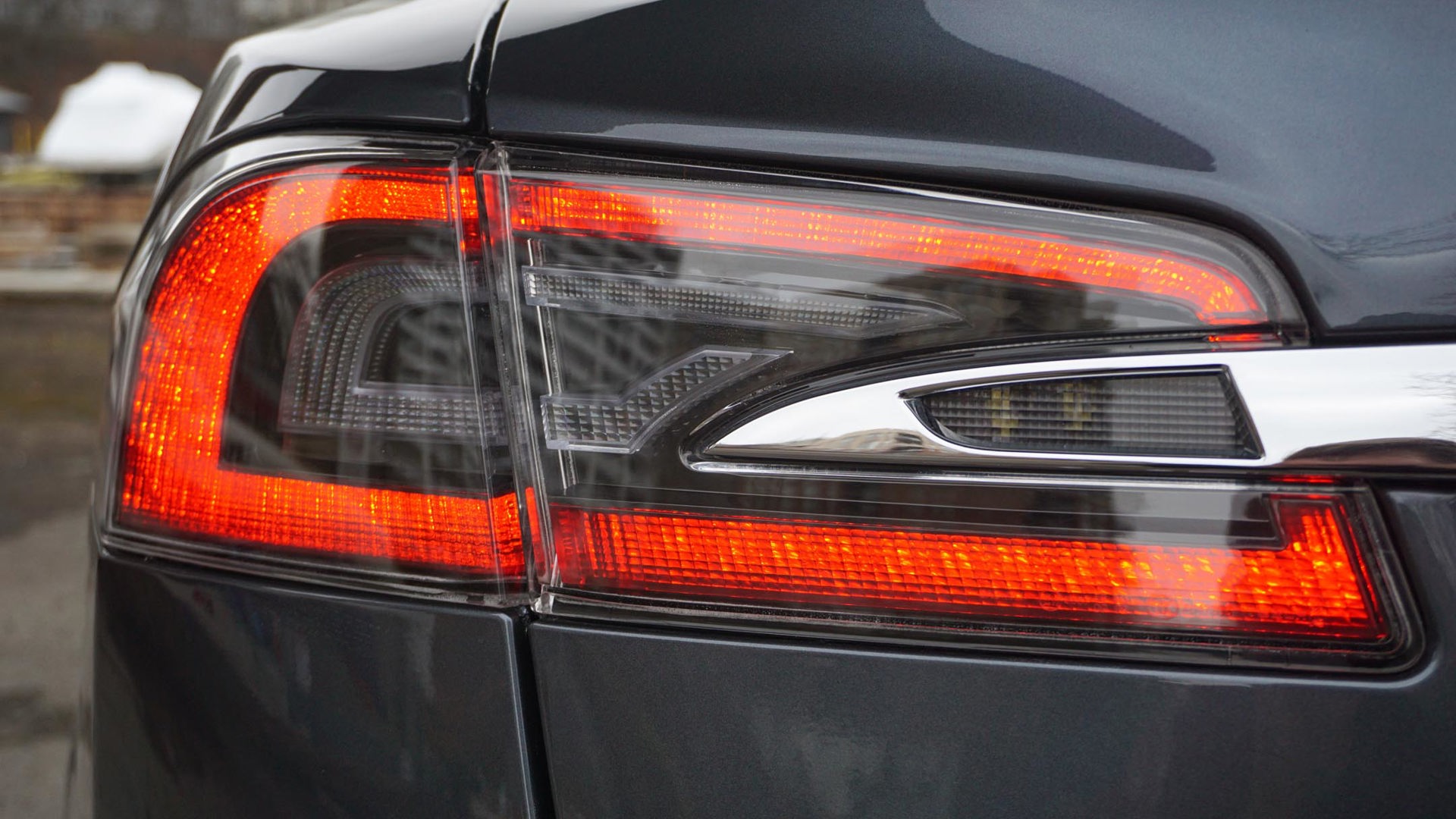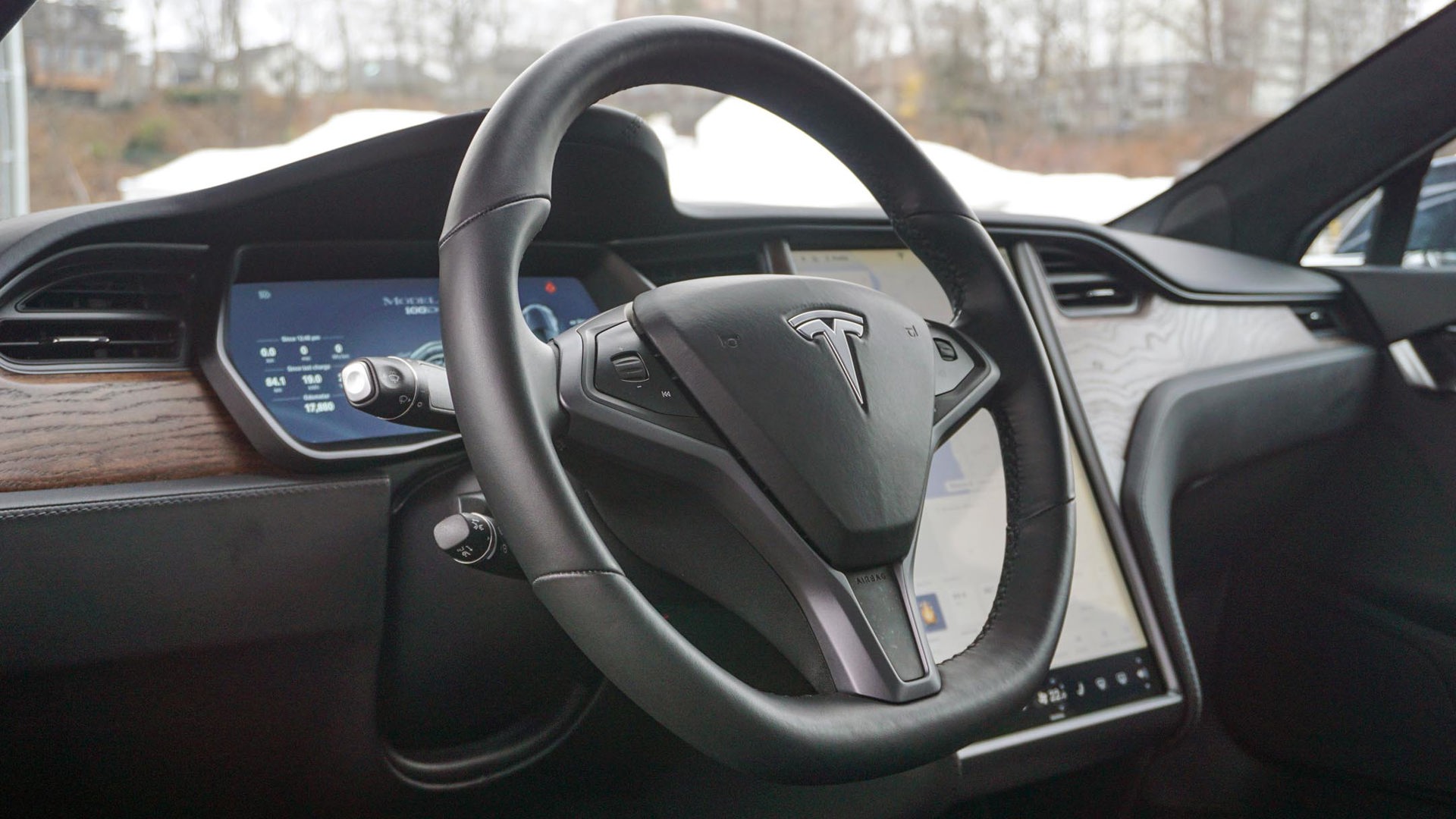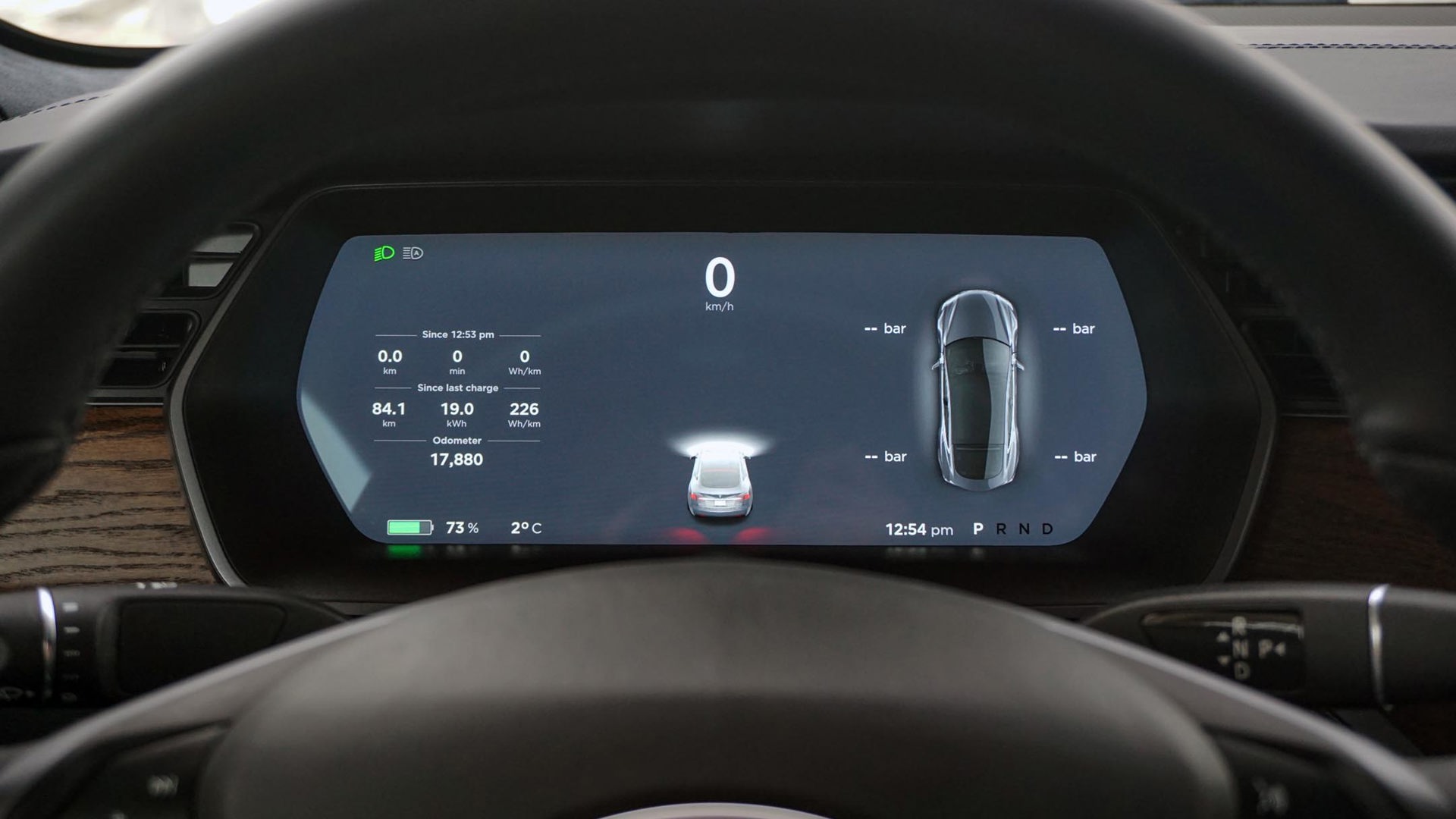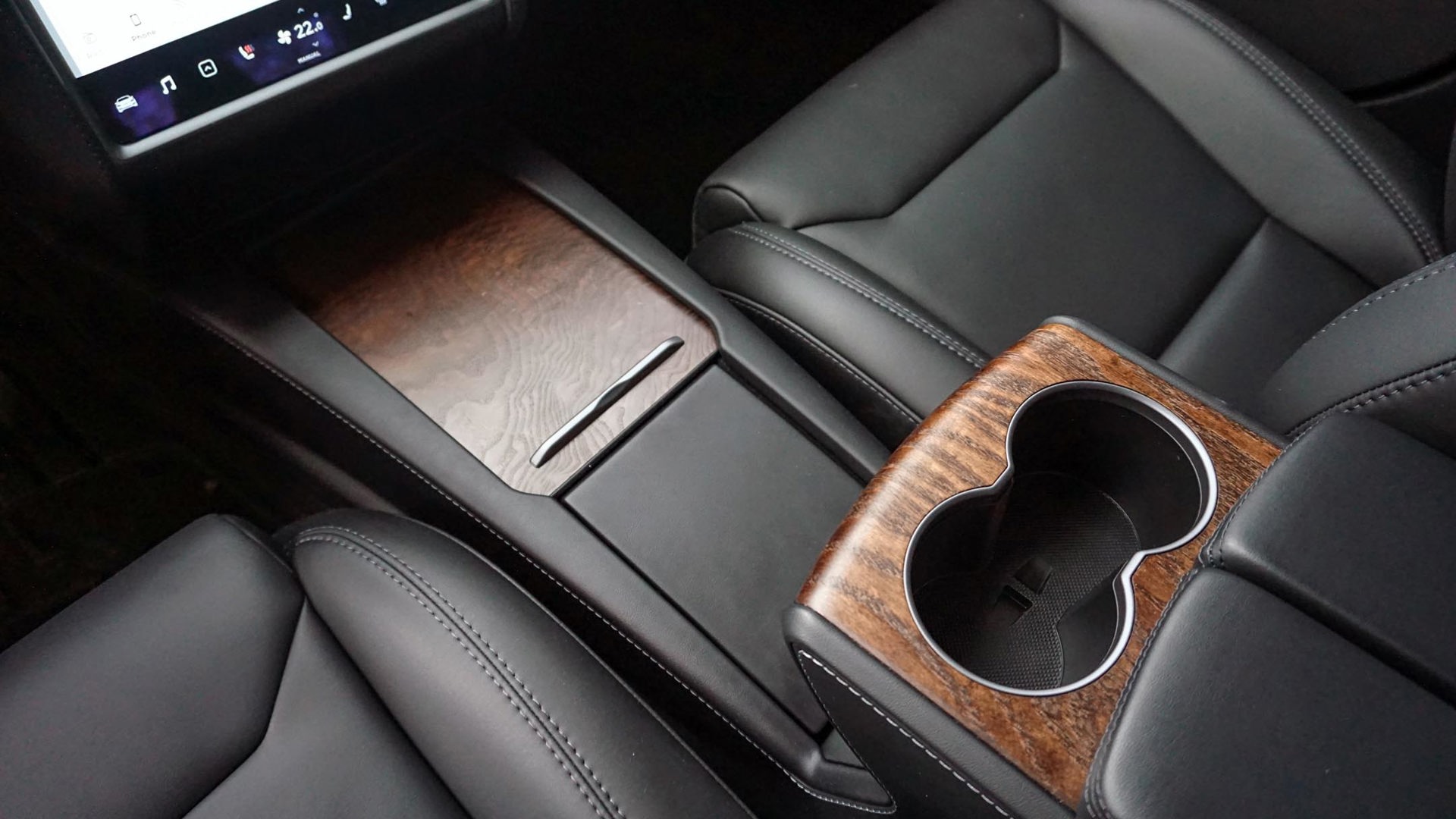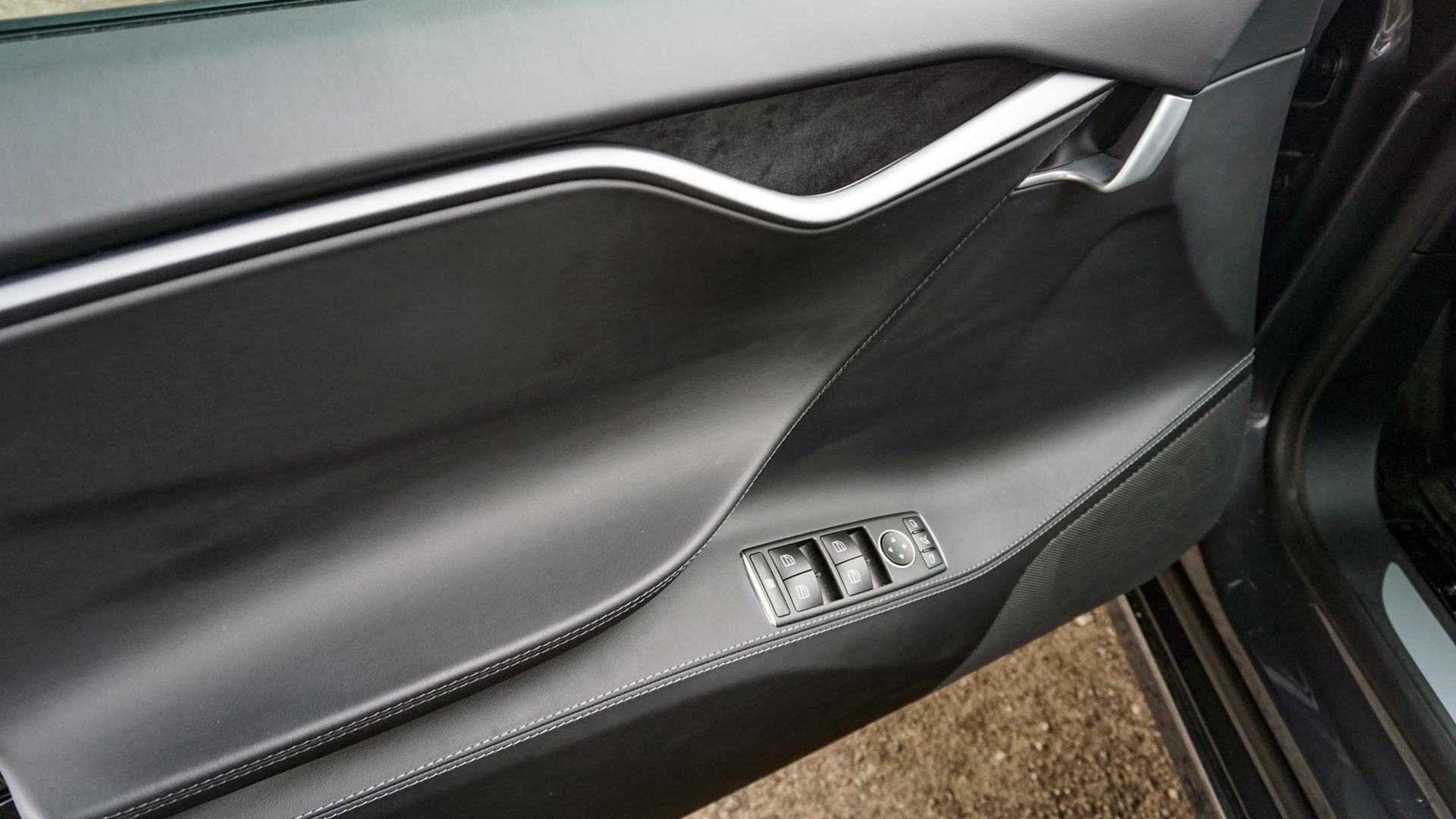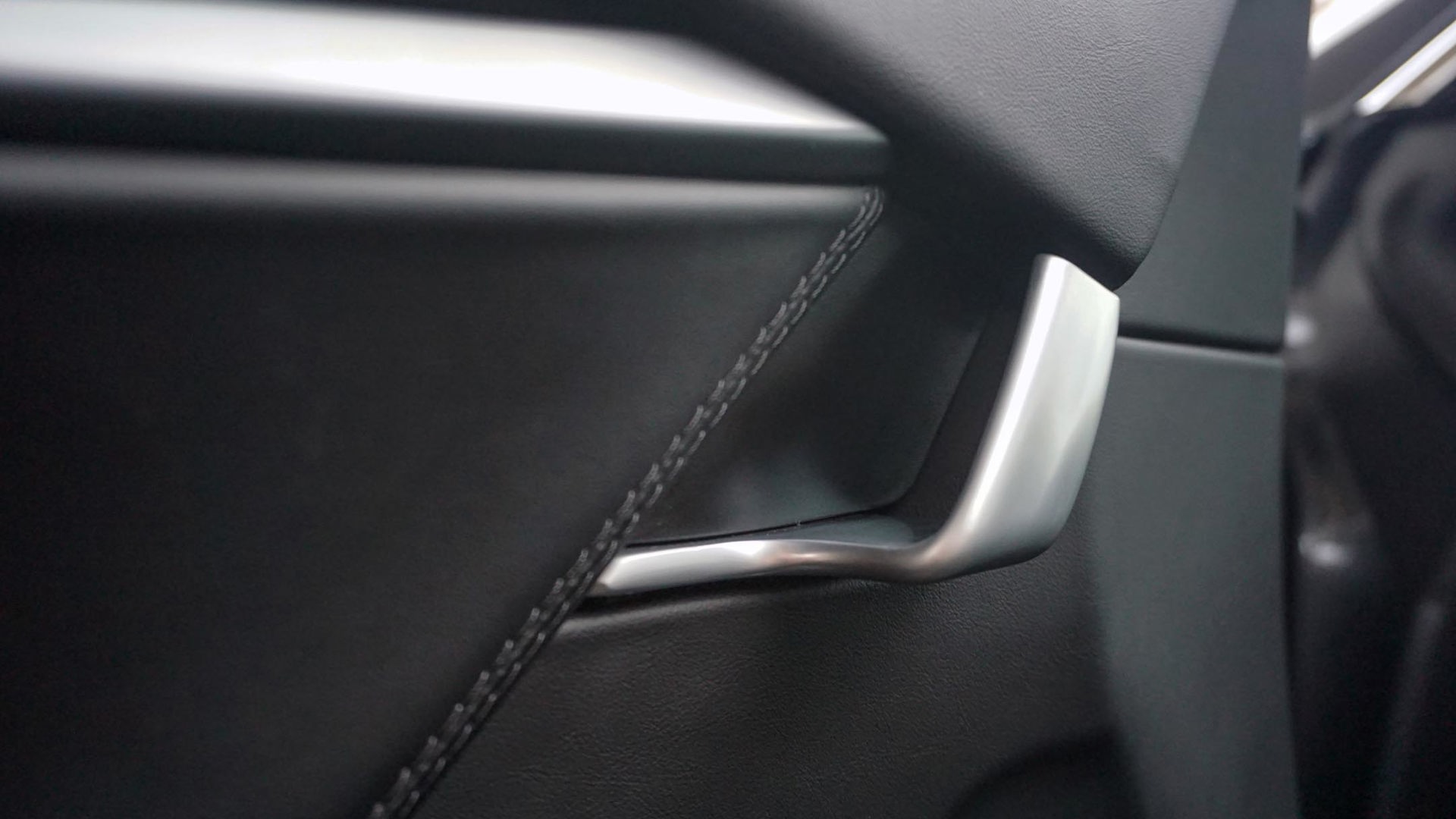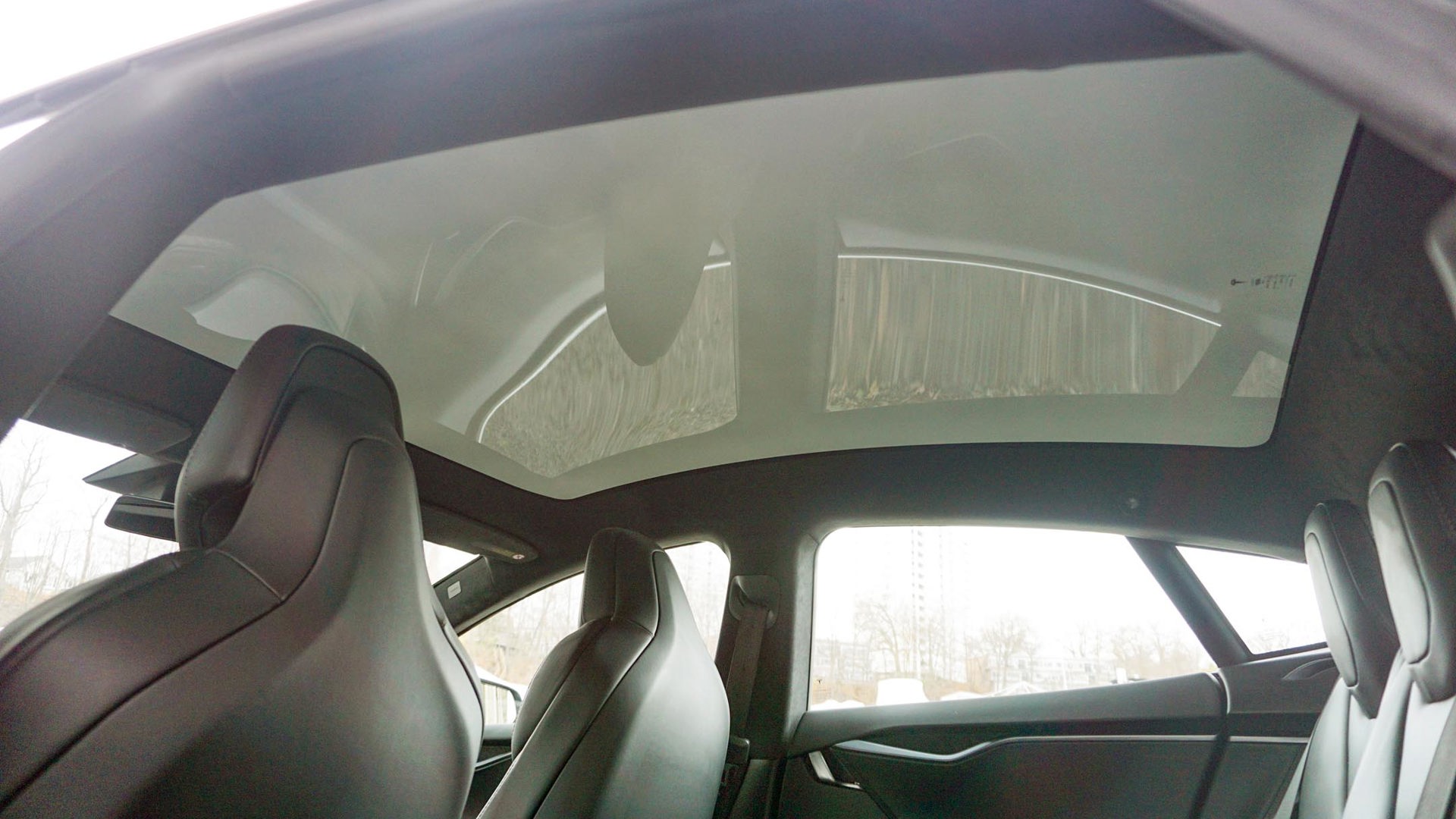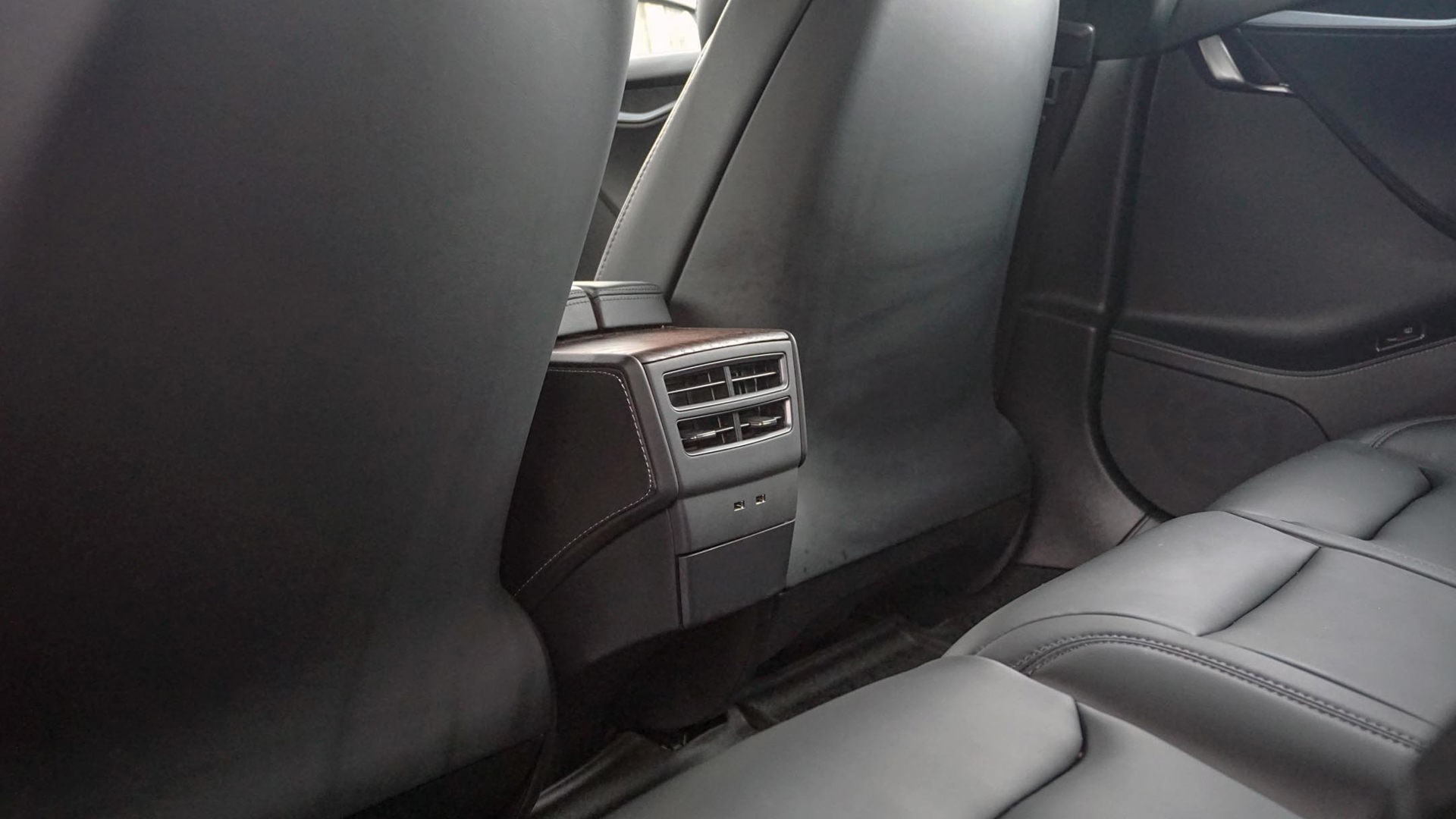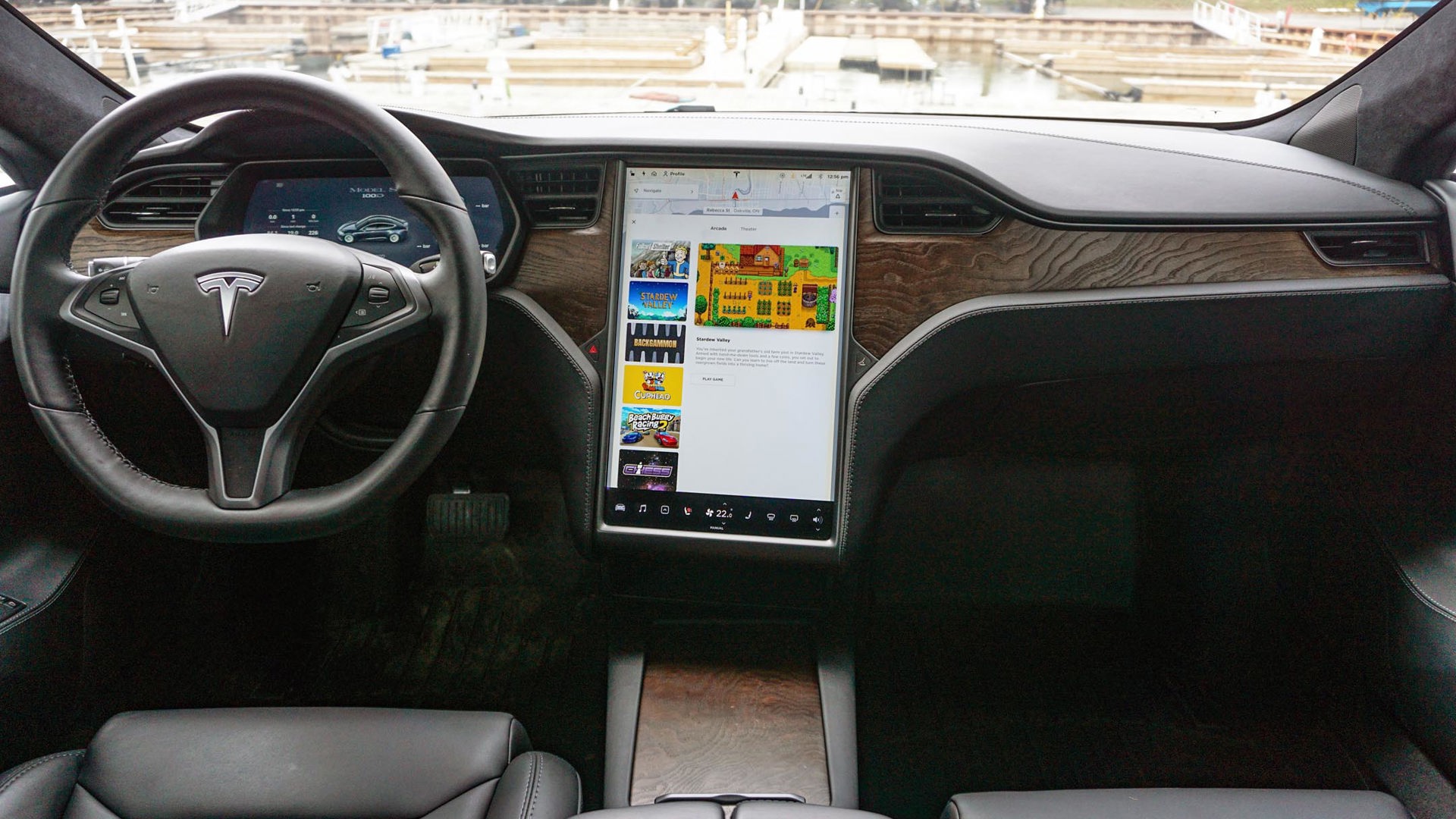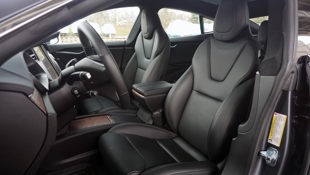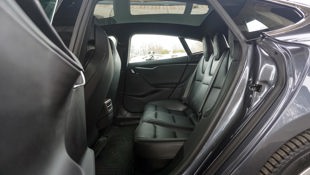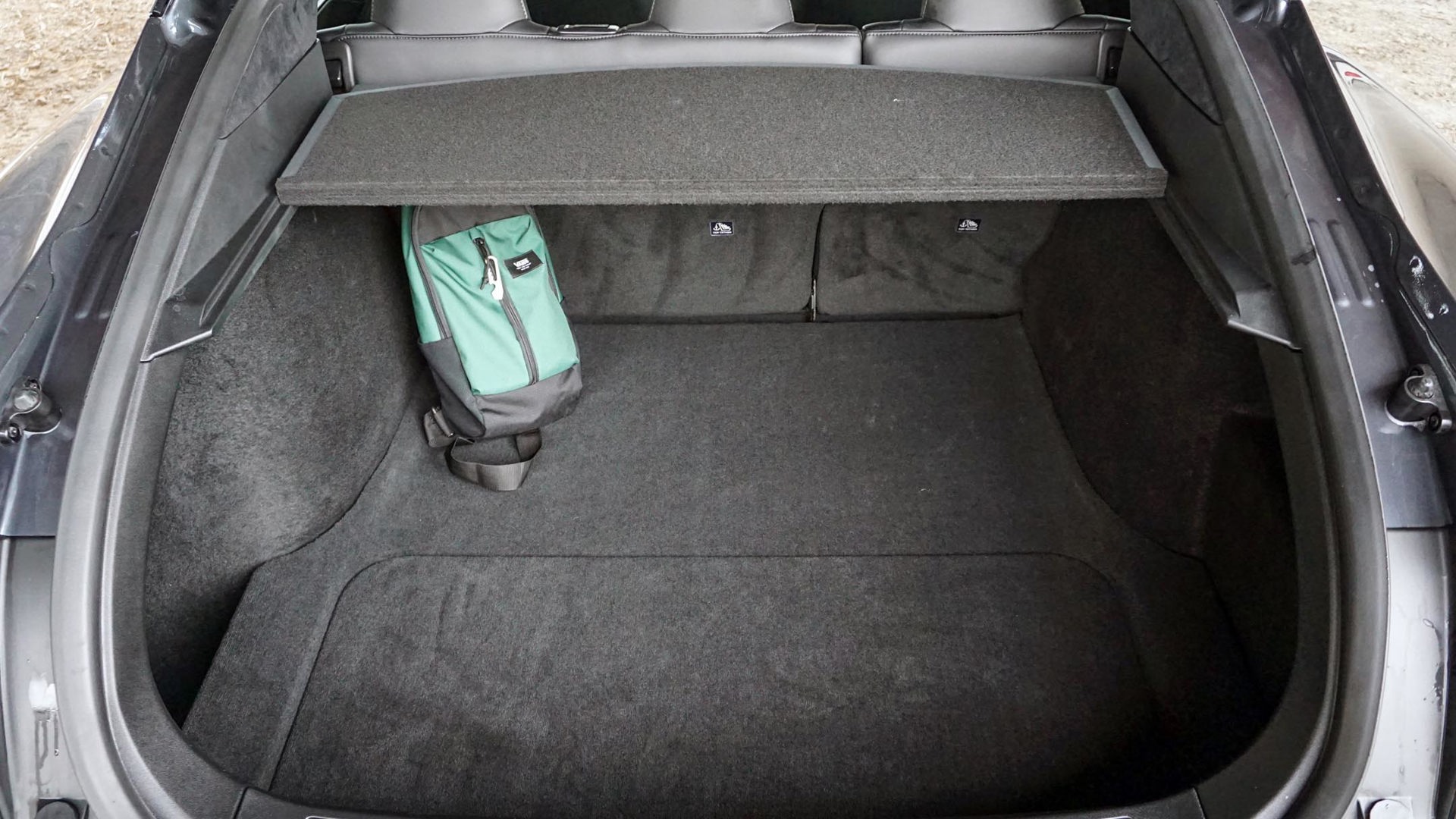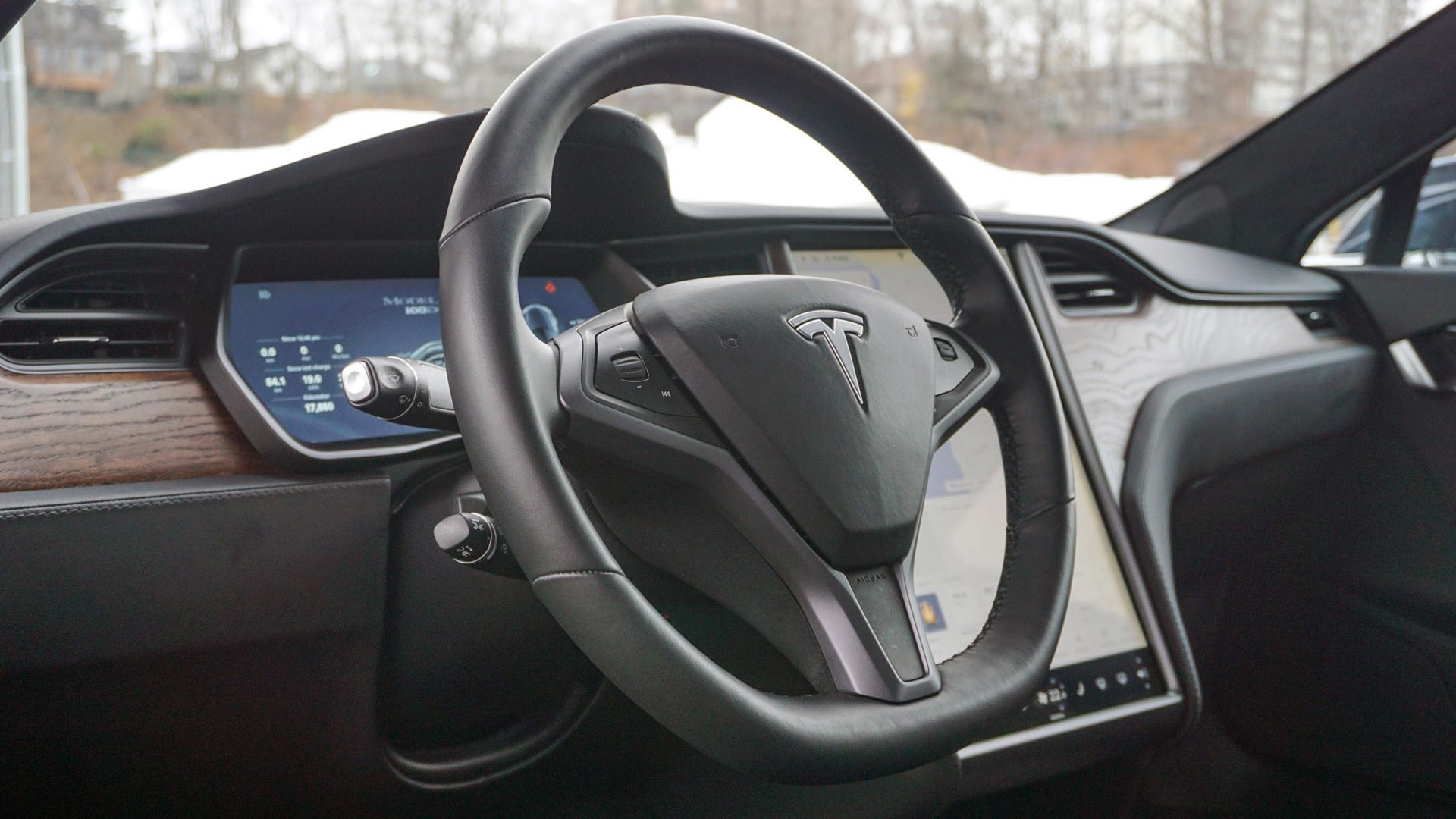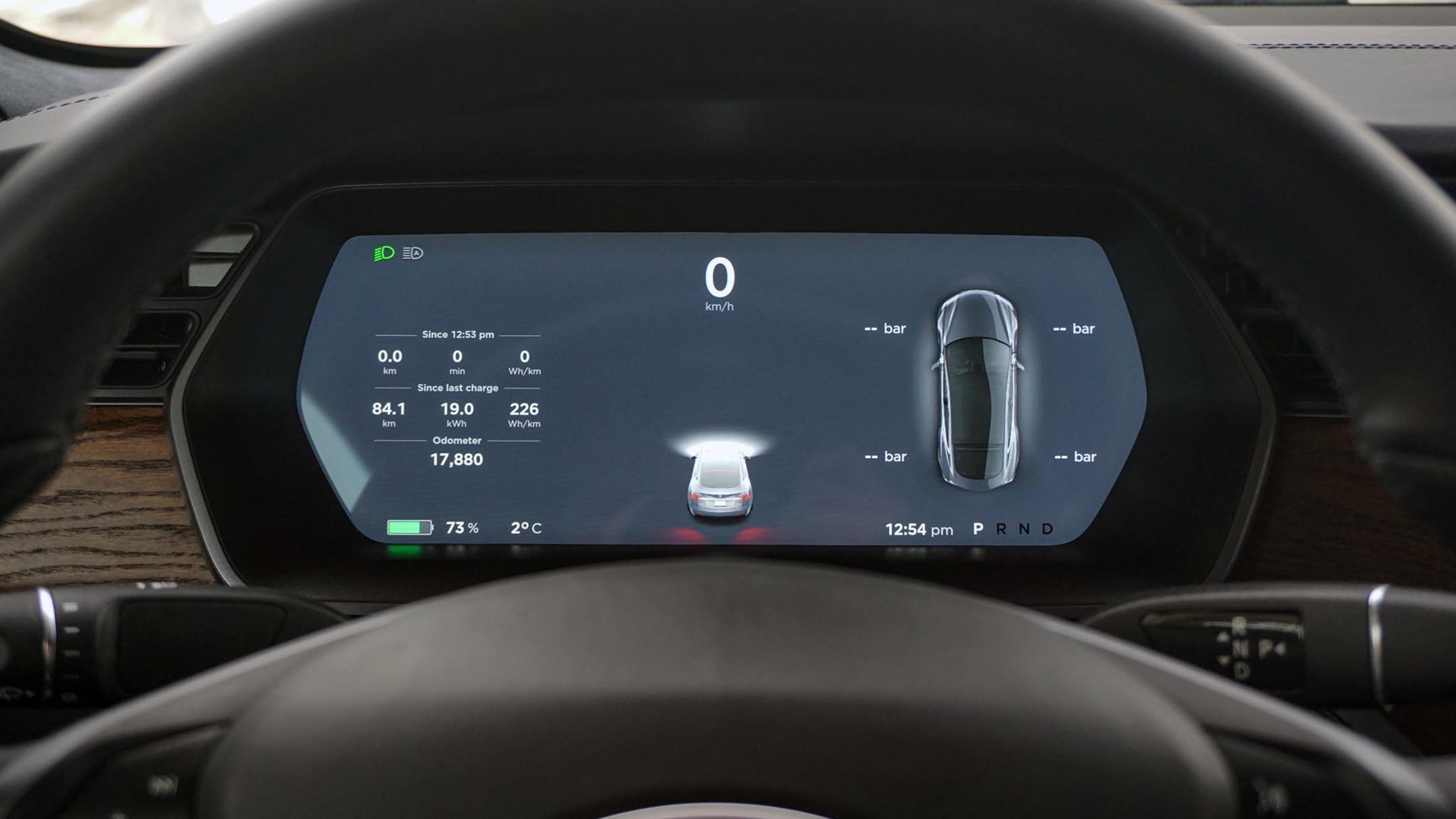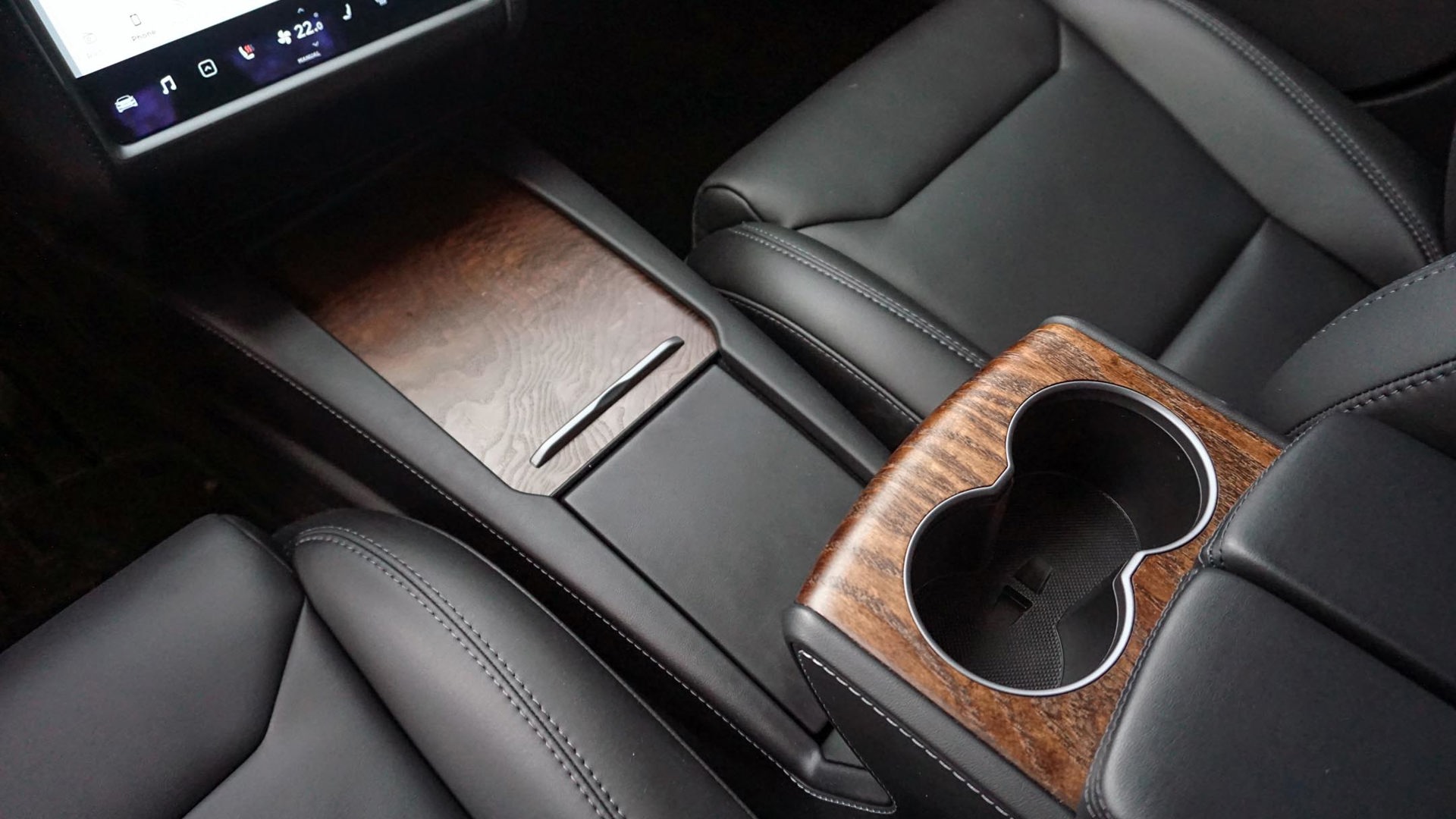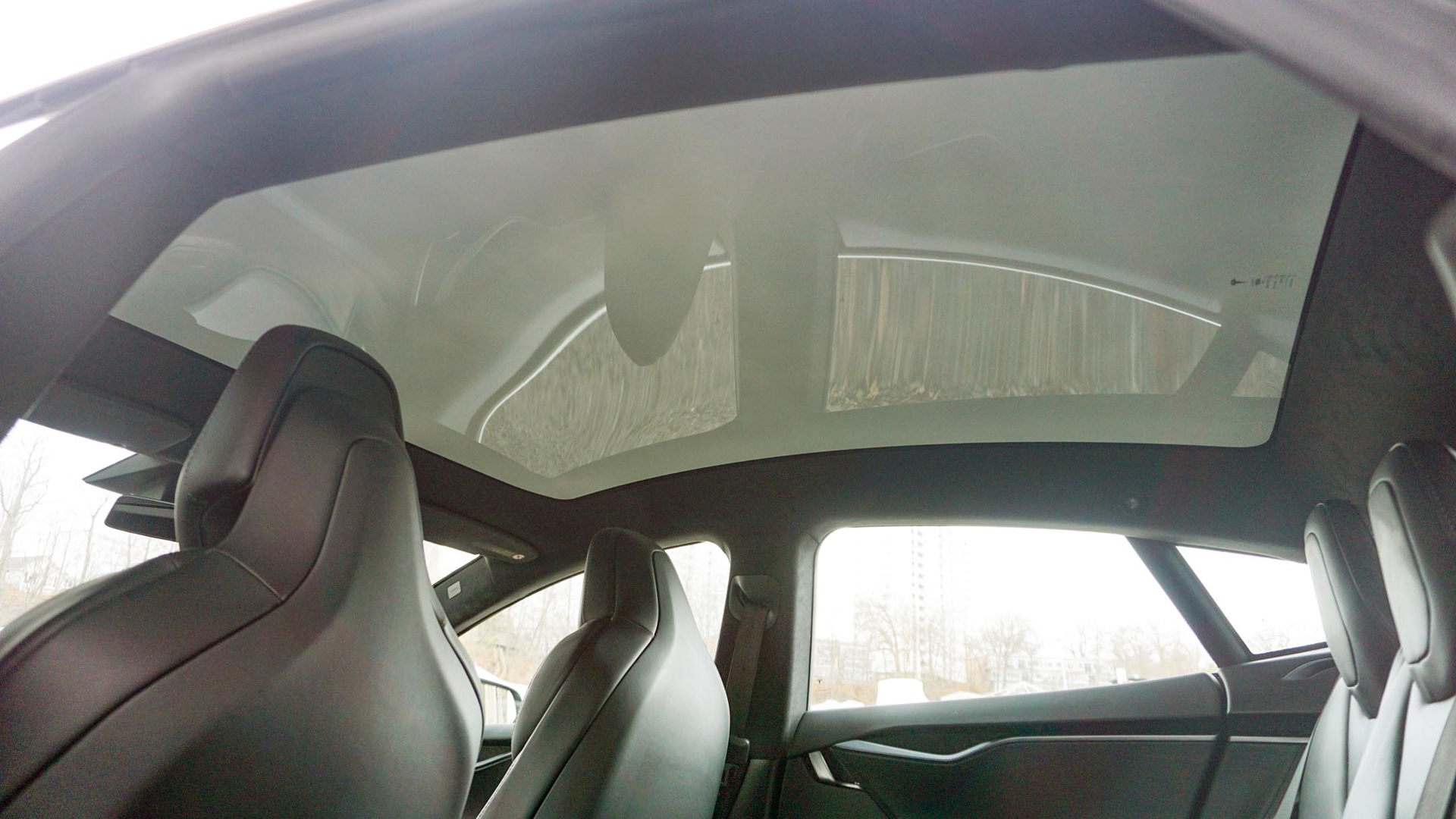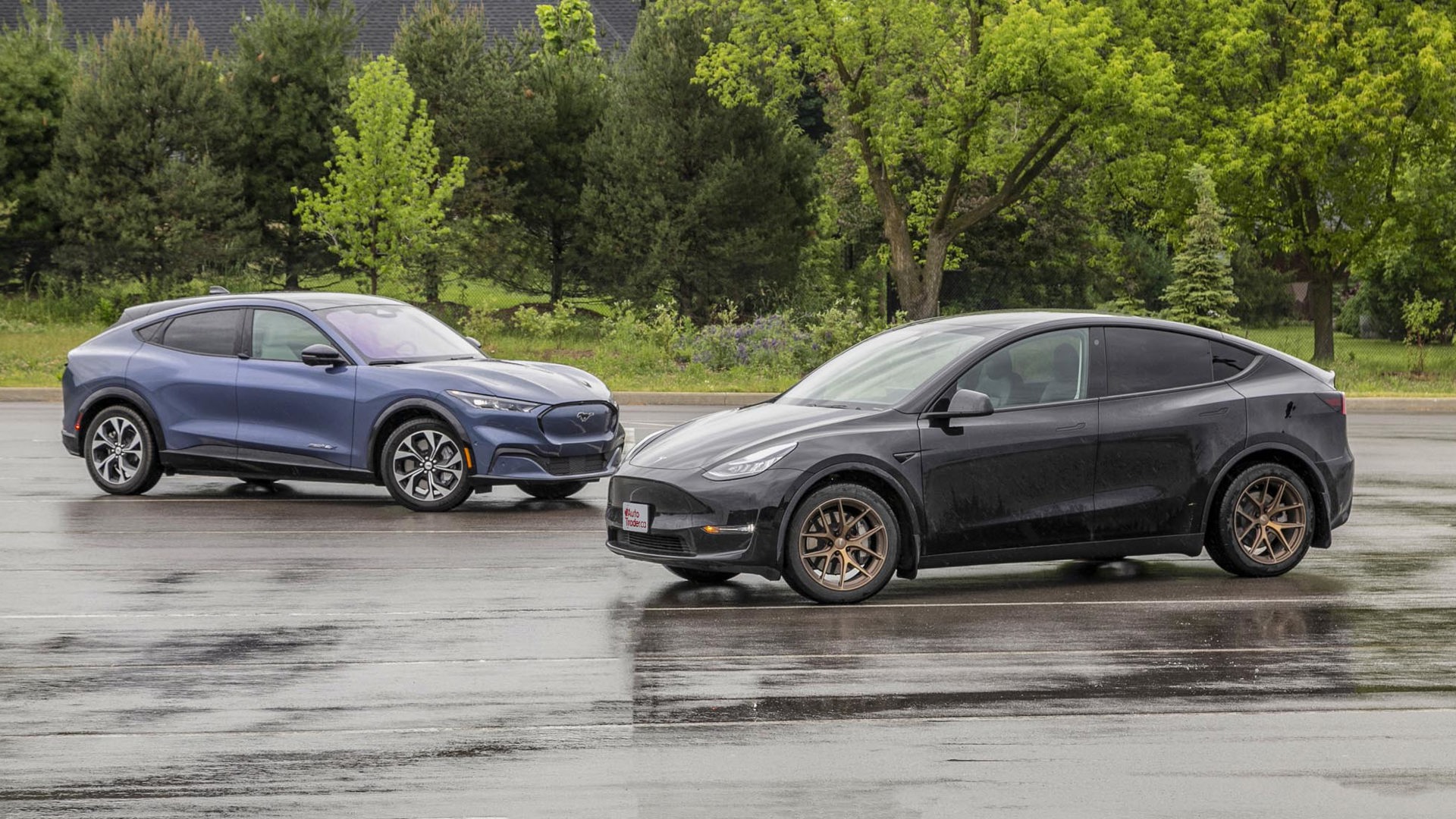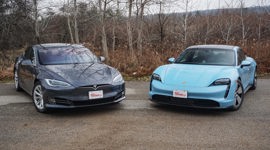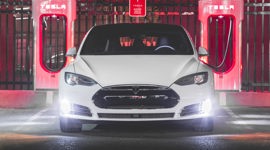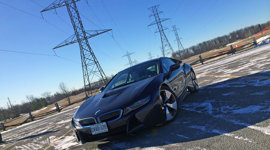 AutoTrader SCORE
AutoTrader SCORE
-
STYLING8/10
-
Safety9/10
-
PRACTICALITY8/10
-
USER-FRIENDLINESS9/10
-
FEATURES9/10
-
POWER10/10
-
COMFORT9/10
-
DRIVING FEEL8/10
-
FUEL ECONOMY9/10
-
VALUE9/10
Editor’s note: the Tesla Model S loaned to autoTRADER.ca for this review was provided by Porsche Canada for a comparative analysis alongside the Taycan 4S. While unconventional for an automaker to loan a competitor product to members of the media, it was deemed appropriate given Tesla does not provide access to its vehicles for evaluation. The car was taken as a trade-in at a dealership owned by Porsche Canada. It has not been modified or altered in any way.
It doesn’t take much time behind the wheel of the Tesla Model S to realize the hype is real. Very real.
It starts with the way the cabin, while a little cold and sterile in the all-black motif seen here, envelops occupants in a manner that’s modern and could almost be described as inviting. Or how immersive the technology is inside, or even the impressive acceleration and outstanding ride quality it offers. It’s a nice combination, and one that makes the broad appeal of this all-electric four-door immediately apparent.
However, for all the ways in which the Model S has for years outclassed the competition and put Tesla on the map as a bona fide player in the premium sedan space, it can come up short of expectations that accompany its six-figure price tag.
Comfort: 9/10
Let’s just be clear right from the start: by most measures that matter, this flagship of the Tesla lineup is simply superb. All these years on – somewhat astonishingly, it’s been around since 2012 – the Model S continues to raise the bar for what an electric vehicle can be capable of. Yet in some of the most fundamental ways, it’s barely up to standards for a car that costs half as much.
It’s not fit and finish issues, either – though those continue to dog the brand (for the record, no such quality concerns were discovered in the car tested here, aside from uneven panel gaps around the trunk lid). Instead, it’s simple stuff like some of the plastics inside that betray the car’s asking price. While some materials inside scream Mercedes-Benz S-Class, others barely whisper CLA-Class and its $44,000 starting price.
Despite the so-so quality of the leather upholstery inside, the seats themselves are contoured in the right ways, providing plenty of support for occupants of all shapes and sizes. Unfortunately, seat ventilation isn’t offered in the Model S, a disappointing omission in a premium sedan such as this, but they are heated front and rear. The steering wheel is heated, too, while the HVAC system is quick to pump out hot – or cold – air when called upon.
User Friendliness: 9/10
Operating the HVAC system along with just about every other feature this side of the hazard lights is done through the massive infotainment display that dominates the dash. While a little daunting at first, the all-touch interface is fairly easy to grow accustomed to. It lacks Apple CarPlay and Android Auto compatibility, but there is Bluetooth – and the system itself makes life without them easy enough anyway.
The lack of physical controls for the air conditioning system is something of a disappointment for the convenience they would add, but simple functions like fan speed can be adjusted using controls on the steering wheel, or through voice commands. The voice recognition system can also respond to requests for heated seat and steering wheel activation, which comes in handy when cruising around.
Practicality: 8/10
Centralizing most features and controls to the touchscreen on the dash is part of Tesla’s simplified approach to operating just about everything inside. The automaker applied the same philosophy to in-car storage, though it does leave something to be desired as a result. For example, there are no door pockets to be found, nor is there a covered console bin where one would normally be found between the front seats. Instead, a pair of cup holders are placed precisely where occupants’ elbows land naturally.
Since this electric sedan doesn’t require traditional shift linkage that would place a gear selector on the centre console, there’s a deep bin beneath the infotainment display that comes with unique dividers to split up the space. Unfortunately, it’s not as useful as it could be, with lots of ways for little items to slide around and out of sight.
When it comes to moving large items like luggage or golf clubs, storage behind the back seats is almost hatchback-like thanks to the liftgate-style trunk. Unfortunately, the shallow slope of that back glass and the trio of fixed headrests for rear-seat occupants make outward visibility atrocious, but the forward and side views are mostly adequate (the thick A-pillars create awkward blind spots).
Safety: 9/10
The Model S supplements what can – and can’t – be seen outside with a whole host of cameras and sensors that are constantly alerting the driver of what’s going on around the vehicle. Blind-spot monitoring, automatic emergency braking, and adaptive cruise control are all included, and the systems work well.
Of course, Tesla also offers an upgrade package it falsely proclaims to include “full self-driving capability,” though it was not optioned on the one provided for this evaluation – nor would your author have used it on public roads even if it was.
Features: 9/10
Despite the limited number of upgrades offered – aside from that suite of driver-assist items, the only options cover paint and interior colours – the Model S isn’t especially well featured for its six-figure price tag. Sure, there are those heated seats front and rear, the heated steering wheel, and the massive touchscreen stuffed with video streaming and gaming options. But that’s about it.
Power: 10/10
There are a few different versions of the Model S offered, though rather than including progressively more premium content, they boast varying levels of efficiency or power – or both. Being a couple years old, the 100D version tested here is no longer built (the car in this comparison is a 2019 with approximately 18,000 km on the odometer). Still, output from its twin electric motors is impressive, with 483 hp and 487 lb-ft of torque.
That helps the Model S sprint to 100 km/h in an estimated 4.4 seconds, slinging occupants into their seatbacks with the unique sensation of an electric car. If that’s not enough, newer versions of the Model S are apparently capable of getting up to highway speed in a little more than two seconds.
Driving Feel: 8/10
Even so, unlike the Porsche Taycan that’s offered with an assortment of goodies that make it a proper performance car, the Model S is more like a premium car that happens to be hilariously quick. It’s still a satisfyingly smooth operator, but a sports sedan it simply is not. The Model S feels out of its element when pushed, preferring a more relaxed approach to driving. As such, the steering and suspension combine for a serene driving experience that encourages efficiency.
Fuel Economy: 9/10
With its 100-kWh battery pack, this version of the Model S is good for an estimated 539 km of emissions-free driving. Better still, the version that replaces it – the so-called Long Range Plus – is good for about 100 km more on a single charge. However, achieving anything close to that proved all but impossible during testing.
With the climate control system working hard to fight the frigid temperatures experienced in late November, an initial stint of driving split in favour of the highway saw 41 per cent of the battery drained over 130 km. That’s not especially impressive, though conditions weren’t in its favour.
At least charging was simple, even for your author who lacks a home hookup. There are plenty of Tesla’s so-called supercharging stations kicking around, and using them is about as easy as it gets: pull up, plug in, and let the car handle the rest. There’s no need to sign into an account; it simply bills whichever account is connected to the car. It did, however, require longer than estimated each time it was hooked up to a charging station – again, a side effect of the cold temperatures during testing.
Styling: 8/10
Despite all the years the Model S has been on sale, it still manages to turn heads. Even when finished in a subtle grey paint like this tester, the sleek and stylish sedan has the proportions and the presence to make an entrance. In fact, it’s only the boring cabin that holds it back, an impressive accomplishment for a car that’s gone mostly unchanged for more than eight years.
Value: 9/10
Back when this particular tester was bought new in 2019, the Model S 100D was priced at $110,700. The grey paint was an extra $2,000, while freight fees brought it up to $113,900 before tax. An equivalent version today would cost even less, with the Model S Long Range Plus starting at $101,990 while providing more driving range.
The Verdict
Forget the price for just a second, or even the emissions-free driving range it’s supposed to provide. Because what really makes the Tesla Model S stand out today just as much as it did when it first hit the market is how easy it makes electric driving. All that’s required is to get in and go; there’s no need to crack an owner’s manual or join a forum first. All these years on, it’s simply so approachable – approachable and impressive.
| Engine Displacement | 386 kW |
|---|---|
| Engine Cylinders | N/A |
| Peak Horsepower | 483 hp |
| Peak Torque | 487 lb-ft |
| Fuel Economy | 2.3 / 2.3 / 2.3 Le/100 km cty/hwy/cmb; 20.7 / 20.5 / 20.6 kWh/100 km cty/hwy/cmb |
| Cargo Space | 745 L |
| Model Tested | 2019 Tesla Model S 100D |
| Base Price | $110,700 (2019) |
| A/C Tax | $100 |
| Destination Fee | $1,200 |
| Price as Tested | $114,000 (2019) |
|
Optional Equipment
$2,000 – Grey Paint, $2,000
|
|
